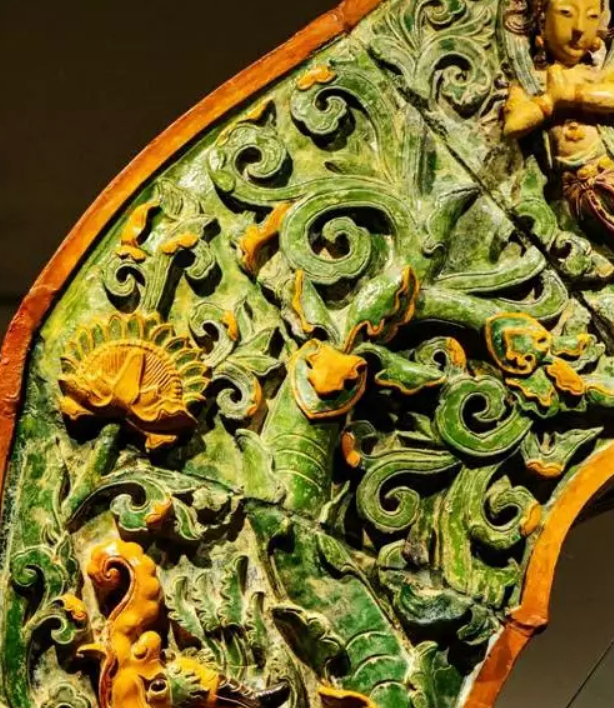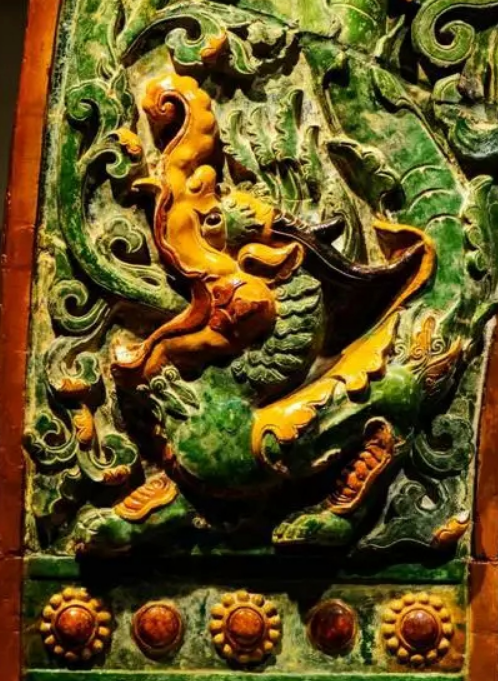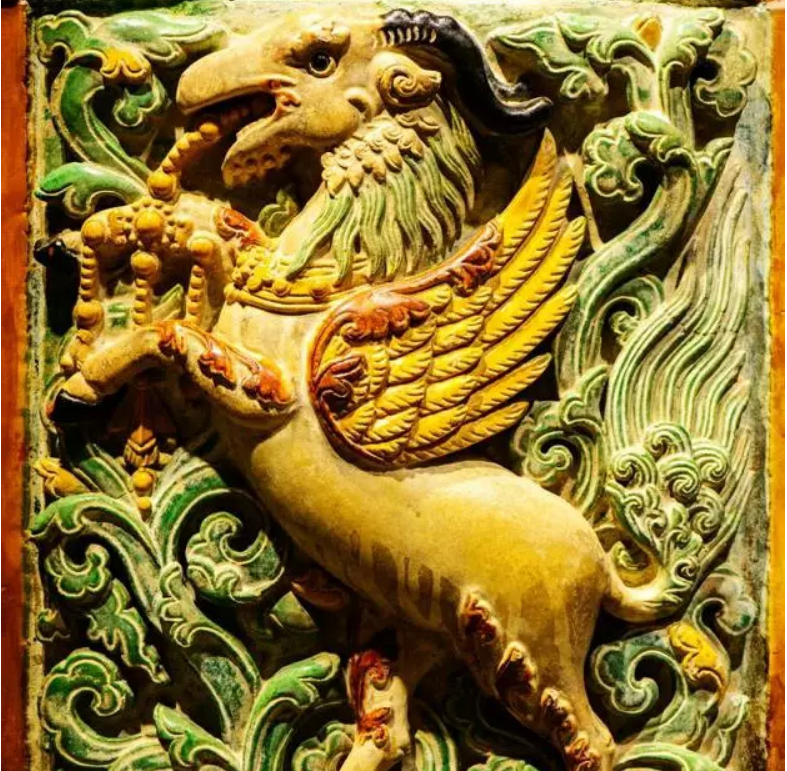

 |
![]()
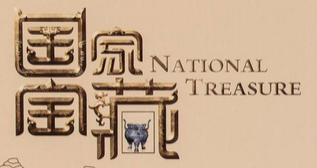
名称:大报恩寺琉璃塔拱门
馆藏:南京博物院
The original blocks of the Nanjing Tower's arched door, now pieced back together and on display at the Nanjing Museum.
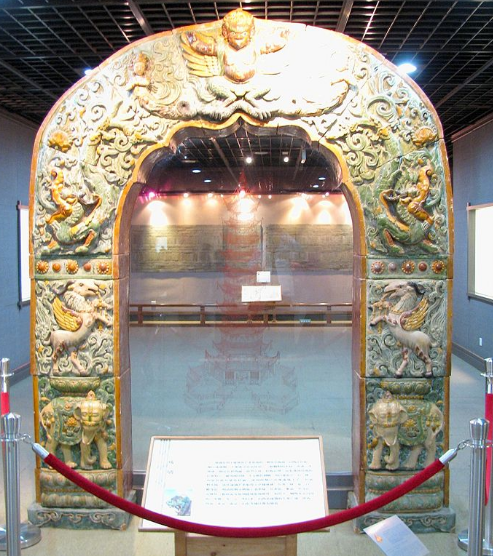
出土地点:南京大报恩寺
所属年代:明代
大报恩寺是明代皇家寺庙建筑的代表,寺中的琉璃塔,被誉为中古世纪七大奇观之一。
这座拱门是用明代大报恩寺琉璃塔的一套备用构建复原而成,门上的形象为藏传佛教密宗所特有的法相装饰,门顶端高举着神态威武的金翅大鹏鸟,两侧对称设置龙女、摩羯鱼、狮羊立兽、白象王等神像和神兽。据史料记载,在当年建造大报恩寺塔石共烧制的三套完整的塔身构建,一套用于施工,两套埋于地下,用于以后的维修。这座拱门就是当时备用两套中的一套。
南京大报恩寺琉璃塔共有九层,塔上这样的拱门共有64套。
The construction of the tower started in the early 15th century, during the Ming Dynasty, right after the design was finalized during the reign of the Yongle Emperor (r. 1402-1424).
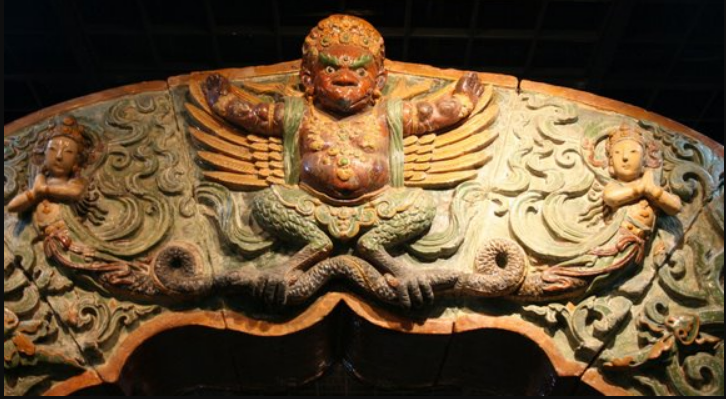
南京博物院所藏大报恩寺琉璃塔拱门,是用1958年在南京中华门外明代琉璃窑遗址上(位于今雨花台区)发现的琉璃构件,并结合民间征集的构件,根据史料记载精选组合而成。

It was discovered by the western world when European travelers like Johan Nieuhof visited China, sometimes listing it as one of the Seven Wonders of the World.
The tower rose from an octagonal base 97 feet (30m) in diameter and it was one of the largest buildings in China, rising up to a height of 260 feet (79 m) with nine stories and a staircase in the middle of the pagoda, which spiraled upwards for 184 steps. There were original plans to add four more stories, to extend the height to 330 feet (101m), but they were never realized.
This tower was 260 feet high octagonal (with eight corners) in shape with 97 feet in diameter. At the time of its construction, it was the largest building in China.
It was built with white porcelain bricks that were said to reflect the sun's rays during the day, and about 140 porcelain lamps were used to light up the structure during the night. Glazes and stoneware were worked into the porcelain and created a mixture of green, yellow, brown and white designs on the sides of the tower, including animals, flowers, and landscapes.
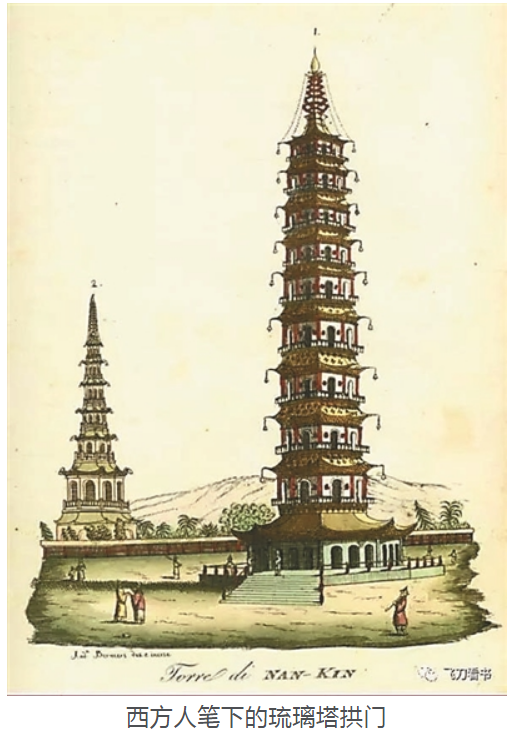
Early European illustration of the Porcelain Tower
(The Tower was destroyed in 1854 during a war)
Large glass pagoda was built to commemorate the Ming emperor Yongle mother Gong Fei, known as "the best in all the land" tower ", more Chinese of antiques, Yongle of Dayao" reputation, the western missionaries and businessmen are called Jinling Dabao'en temple tower as "Nanjing's representation, is" the most luxurious, Oriental the art of building the pink of perfection masterpiece ", known as one of the seven wonders of the world.
葡萄牙的传教士曾德昭在《南方九省中的南京》中写道:“(南京)还有一座结构精美的七层塔(作者注:应为九层),布满偶像,好像是用瓷制成的,这座建筑物可列入古罗马最着名的建筑。”
1655年,荷兰东印度公司使团来到南京,随团的画师尼霍夫绘制了多幅琉璃塔的写生作品,后来以铜版画的形式在欧洲出版,迅速掀起了“南京瓷塔热”。
这座足可以代表中国的瓷塔,在欧洲家喻户晓,以至于从没来过中国的安徒生,将其写进了童话《天国花园》之中。
南京大报恩寺遗址长干寺地宫:
2008年,在大报恩寺遗址处发现了其前身长干寺地宫,在这座保存千年而未坏的地宫中,出土了“七宝阿育王塔”等一大批国家级文物与佛教圣物;2010年,从阿育王塔中,盛世重光了佛门至宝“佛顶真骨”“感应舍利”“诸圣舍利”,震惊华人世界和佛教界。大报恩寺遗址也被国家文物局专家组称之为“规格最高、规模最大、保存最完整的中国古代寺庙遗址”,并被评为“2010年中国十大考古发现”。
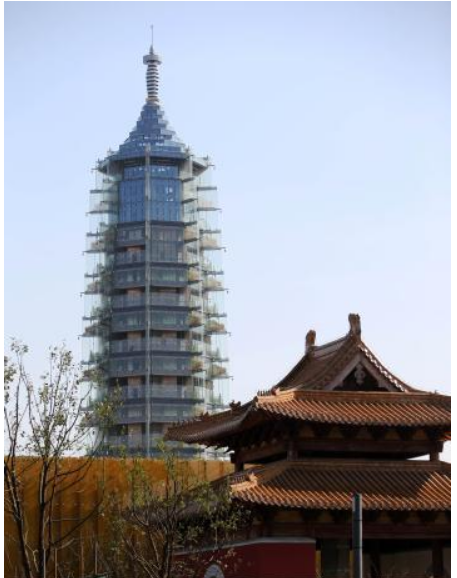
南京大报恩寺遗址公园
Reconstruction of historic landmark tower in 2015
2015年在遗址上方作为保护建筑--“千年琉璃塔”--得以“重建”。按照文物保护可识别原则,即使原址重建新塔,也不能再做琉璃塔,否则将会造成历史信息混乱。所以,虽然人们期待着一座历史上曾流光溢彩、光耀世界的琉璃塔重现人间,不过遗憾的是,现在矗立在原址上方的,是一座与原塔形似而神非似的“现代建筑”。
该建筑采用四组钢管斜梁跨越遗址上空,地梁落脚点位于原来塔基遗址的外侧,既减少对遗址的扰动,又起到保护地宫的作用。不过为了传承历史记忆,最终还是将保护建筑做成了轻质的九层塔,其规模、形制、长细比与原塔近似,并定名为‘大报恩塔’。”


一座历史上曾流光溢彩、光耀世界的琉璃塔:
大报恩寺遗址位于南京中华门外古长干里,这里是南朝寺庙的发祥地和江南佛教中心,东吴大帝孙权建江南首寺──建初寺,供奉“感应舍利”,长干里遂崇称“佛陀里”,江南大地自此佛法大兴。随后的长干寺的阿育王塔为中国十九座阿育王塔之一,大报恩寺为明代金陵三大寺之首,下辖百寺,寺中的琉璃塔因其壮观精美无伦,而被誉为媲美古罗马斗兽场、比萨斜塔等“中古世界七大奇观”。
从吴太祖孙权、梁武帝、宋真宗到明永乐、宣德皇帝,大报恩寺前世今生之命运皆系皇家,实为圣上礼佛行为之观照。永乐帝以“宫阙规制”建造的大报恩塔寺,更是登峰造极,被誉为“皇家佛堂”。
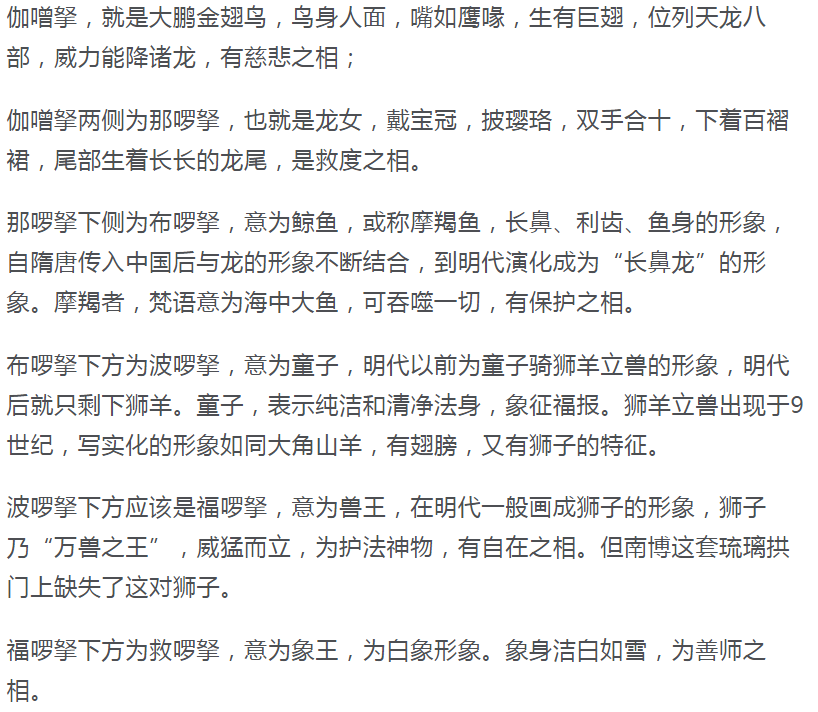
相关建造:
明永乐年间,明朝政府多次组织汉佛教高僧访问西藏,支持宗喀巴领导的宗教改革,宗喀巴也选派其大弟子释迦也失上师前往南京,受到明成祖的隆重接待。
当时南京大报恩寺尚在建造之中,券门使用六□具图案即受到释迦也失带来的藏传密宗的影响。
在北京的明代建筑上,也有多个类似的形象,明永乐年间所建真觉寺金刚宝座塔的前后门券,以及塔座上小佛塔佛龛的门券上都有和南京大报恩寺琉璃塔门券图案类似的。
相对较为完整的大报恩寺琉璃塔拱门,目前陈列在南京博物院历史馆,在南博雕塑馆、南京市博物馆,则有散落的大报恩寺琉璃塔拱门琉璃构件的收藏。
